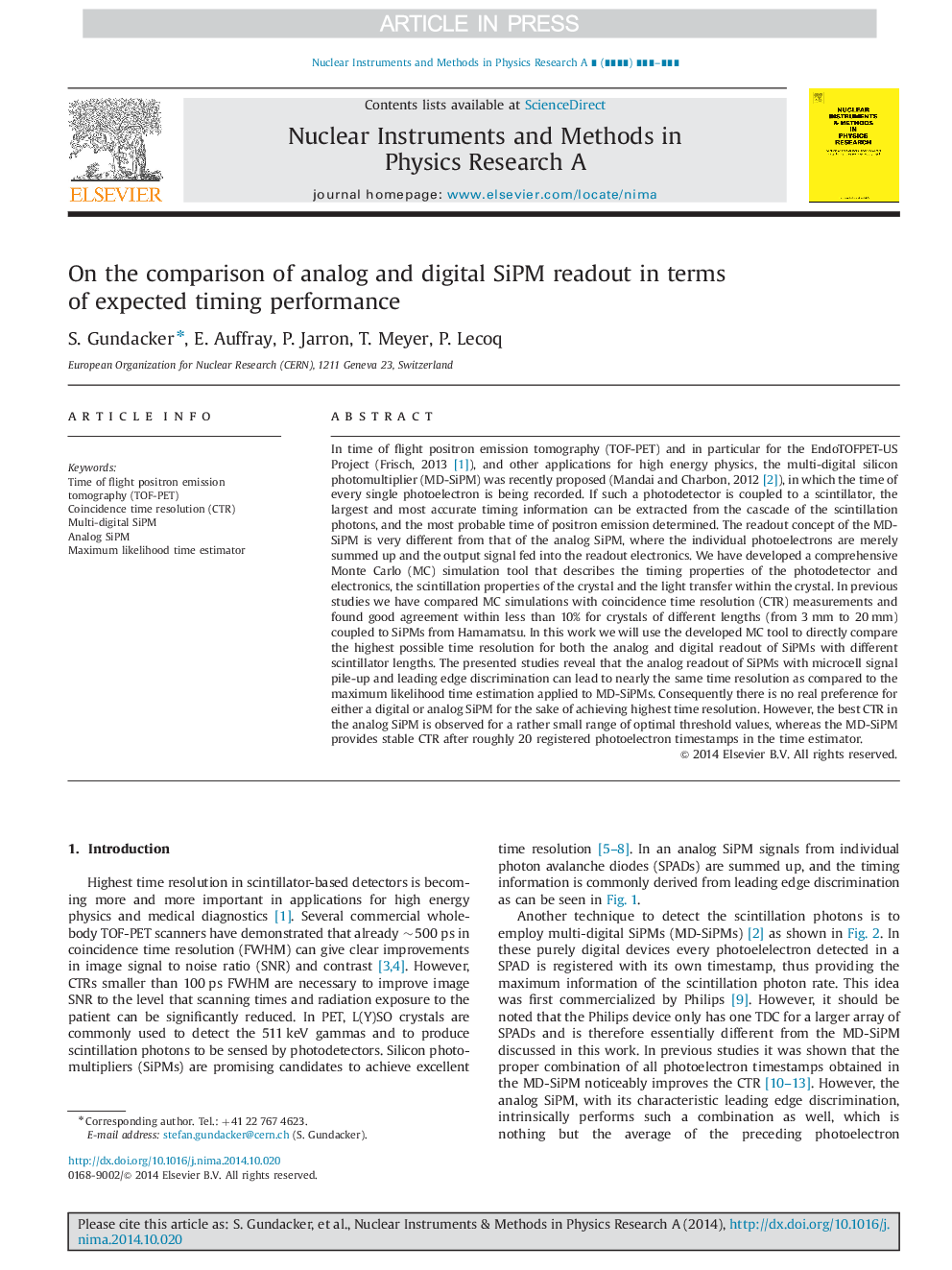| Article ID | Journal | Published Year | Pages | File Type |
|---|---|---|---|---|
| 8173040 | Nuclear Instruments and Methods in Physics Research Section A: Accelerators, Spectrometers, Detectors and Associated Equipment | 2015 | 6 Pages |
Abstract
In time of flight positron emission tomography (TOF-PET) and in particular for the EndoTOFPET-US Project (Frisch, 2013 [1]), and other applications for high energy physics, the multi-digital silicon photomultiplier (MD-SiPM) was recently proposed (Mandai and Charbon, 2012 [2]), in which the time of every single photoelectron is being recorded. If such a photodetector is coupled to a scintillator, the largest and most accurate timing information can be extracted from the cascade of the scintillation photons, and the most probable time of positron emission determined. The readout concept of the MD-SiPM is very different from that of the analog SiPM, where the individual photoelectrons are merely summed up and the output signal fed into the readout electronics. We have developed a comprehensive Monte Carlo (MC) simulation tool that describes the timing properties of the photodetector and electronics, the scintillation properties of the crystal and the light transfer within the crystal. In previous studies we have compared MC simulations with coincidence time resolution (CTR) measurements and found good agreement within less than 10% for crystals of different lengths (from 3Â mm to 20Â mm) coupled to SiPMs from Hamamatsu. In this work we will use the developed MC tool to directly compare the highest possible time resolution for both the analog and digital readout of SiPMs with different scintillator lengths. The presented studies reveal that the analog readout of SiPMs with microcell signal pile-up and leading edge discrimination can lead to nearly the same time resolution as compared to the maximum likelihood time estimation applied to MD-SiPMs. Consequently there is no real preference for either a digital or analog SiPM for the sake of achieving highest time resolution. However, the best CTR in the analog SiPM is observed for a rather small range of optimal threshold values, whereas the MD-SiPM provides stable CTR after roughly 20 registered photoelectron timestamps in the time estimator.
Related Topics
Physical Sciences and Engineering
Physics and Astronomy
Instrumentation
Authors
S. Gundacker, E. Auffray, P. Jarron, T. Meyer, P. Lecoq,
